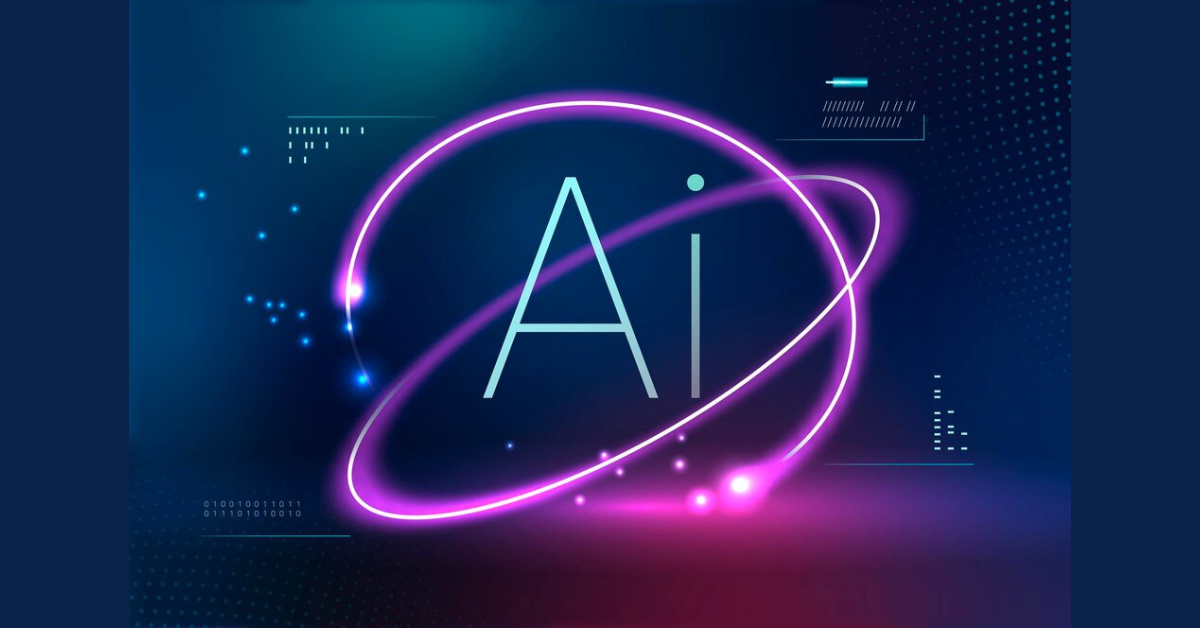Artificial intelligence is progressively influencing the way content is visualized and will be created visually. As a result, there are now a lot of new opportunities and, potentially, significant challenges in the future. Alongside the upsurge of AI technology, the tasks and equipment involved have also become complex concerning image, video, and other visual media content generation. This paper presents the potentials, pros, cons, and hurdles that should be taken down of the use of AI-generated visual content.
Introduction to AI-Generated Visual Content
AI-generated visual content is any media realized by the utilization of algorithms and machine learning models, like GANs, also known as Generative Adversarial Networks and Neural Networks. These technologies are to create pictures, videos, and even artwork with very realistic notions as much as possible but under very minor human control. This kind of technology is now relevant in any industry, including marketing, entertainment, and design.
Opportunities in AI-Generated Visual Content
- Cost and Time Efficiency
One of the greatest advantages of AI-generated visual content is the time and amount of money saved concerning content generated through manual effort. For example, the creation of any high-quality graphical or video content usually involves a team of designers and videographers, with the help of editors, taking time and money. All this can be accelerated and done for a fraction of the cost of AI tools.
- Personalization and Customization
AI can analyze user data to create highly personalized and customized content. In marketing, for example, it would use the mammoth amount of data on users to develop targeted ads at a very fast speed, which would function according to each individual’s preference, increasing engagement and conversions. This can’t be done on a manual scale, but it’s pretty feasible with AI.
- Innovation in Creative Fields
AI- generated video content will be a game changer toward opening up new dimensions of creativity. New and innovative designs and concepts that are hard to think of in manual ways would be possible under AI tools. It works just like an ideal collaborator to let the ideas flow and to help in the generation of unique visual motifs.
- Better User Experience
Concerning e-commerce and social media, a lot can be done to improve the user experience using generated content. For example, the creation of realistic images of products from different angles or the creation of social media posts to keep users engaged can be done using AI. This would ensure visual appeal, freshening content, and relevance.
Challenges in AI-Generated Visual Content
- Human and Legal Issues
AI use in augmentation generates a myriad of legal and ethical concerns, where misuse relates to the development of deep fakes or false news pieces. This raises issues of accountability and the need for regulatory frameworks that would govern the application of AI in content creation.
- Quality and Originality
While much success has been attained in AI toward creating photoreal visual content, quality and authenticity are still a massive issue. In some instances, the AI-generated photos or videos may show minute imperfections or even minor inconsistencies; this would either compromise or put in question the veracity of the presented content. Implicitly, high-quality outputs could only be given through the continuous training of AI models.
- Intellectual Property Rights
A still more baffling issue is one of the determination of ownership to AI-created content. If AI creates some artwork or design, so to speak, then who owns the copyright — the AI developer, the user setting the parameters, or the AI? This kind of ambiguity on intellectual property rights can lead to litigation, and hence the need for clear guidelines.
- Dependence on Data
AI-based systems highly rely on large datasets to generate visual content. The quality and diversity of the datasets determine the output directly. On the flip side, sourcing high-quality data is quite a challenge, and there lies a threat of bias in the datasets and more so in the content generated.
The Role of AI-Generated Video in Modern Content Creation
Among the generative visual content produced by artificial intelligence, a video holds the closest position to ultimate technology. It is possible to render videos with no human intervention whatsoever, right from small clips headed for social media platforms to feature films. This can change the landscape of the production level, not just in advertising, entertainment, and education but in other fields as well.
Some of the benefits that follow AI-generated video content are as-
- Speed and Efficiency: AI produces video content very fast, therefore, with the tendency to bring about the quick execution of your ability to respond to events.
- Cost-effectiveness: AI can practically save a lot of money by providing the process of video production without heavy production crews and equipment.
- Personalization: This video message or advertisement by AI can easily be personalized according to the viewer, hence making it more engaging and impactful.
However, AI-generated video faces the same challenges as other forms of AI-generated visual content. Quality, authenticity, and ethical issues are, therefore, the greatest concern.
Case Studies and Applications
- Marketing and Advertising
AI-generated visual content is revolutionizing how advertising and marketing are done. Similarly, brands can leverage AI to come up with powerful ads that capture the attention of their intended audience. For instance, AI could be utilized in coming up with dynamic ad visuals that shall be adaptive to different users’ preferences and hence result in more effective marketing campaigns.
- Entertainment Business
The entertainment industry is also slowly opening up to AI-generated content. Along these lines, AI-driven tools create special effects, even virtual set design, or whole scenes in movies. This does not just reduce production costs but also opens new creative possibilities.
- Design and Art
The use of AI in jamming out with the maximum creative juices is done by designers and artists. The most common use of such AI-generated art is using it as a source of inspiration and its many commercial uses. AI tools can free an artist from tedious routines associated with design, therefore, granting more time to improve the creative and complex sides.
- E-commerce
The other way around, the e-commerce industry adopts the visual content developed with the help of AI to make possible the advanced presentation of products. Retailers can use AI to create high-quality images and videos of products explaining the products more accurately to the possible customers, which can lead to better sales and better satisfaction of the clients.
Future Prospects of AI-Generated Visual Content
Artificial intelligence-created Visual Content looks to have a lot of potential shortly, with rising technologies bound to solve present issues. Here is what can be projected:
- Improved Quality and Realism
Now, with the development of quality and realism in the generated content of AI models, the look of the AI-generated visuals will be just like humans’ work to a degree that, now, it can be applied across several broader industries.
- Enhanced Ethical Decisions
Making ethical decisions to drive working performance In this regard, strong guidelines and regulatory frameworks on an ethical footing would go a long way in overcoming the risks involved in AI content creation. This ensures that AI use is responsible and ethical, protecting creators and consumers.
- Easier to Accessible
AI tools for visual content creation will be usable by people and small businesses. The democratization of artificial intelligence will further claim creativity and innovation in many industries.
- Integration with Other Technologies
AI-generated visual content will blend more and more with other emerging technologies, such as AR and VR. It will create an immersion of experiences that will have an impact on how we view and create digital content.
Conclusion
AI-generated visual content opens immense opportunities for cost-saving, personalization, and new scopes of creativity. This comes with quite a few challenges—from ethical concerns to quality assurance and even intellectual property concerns. With the technology constantly evolving, these are the challenges that need to be surmounted to harness the full potential that AI brings to the table in visual content creation. Note that AI-designed video is already witnessing a revolution in regards to present content creation. The way one gets a glimpse of the future through the right lens is with AI-designed visual content that has the potential for business-related results and through how the same content permits engagement with the audience. In conclusion, the future is great with AI-generated visual content, promising a great remolding of the creative landscape but requiring thoughtful consideration of the implications. Going forward, innovation will need to be balanced with careful ethical responsibilities that allow us to achieve the best that this transformational technology yet has to offer.







